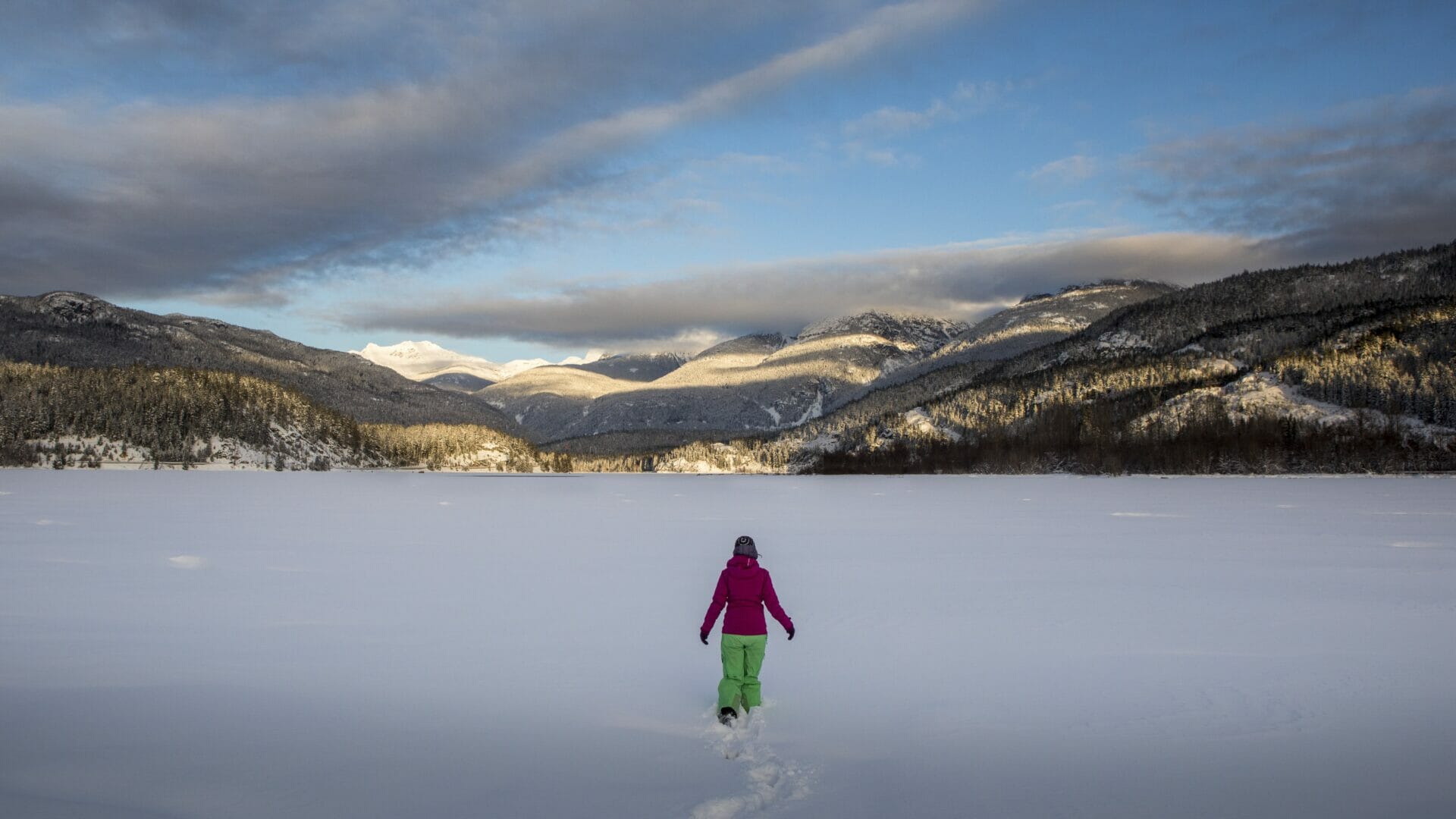
Be adventure smart when you head outdoors in the winter. Understand the conditions, carry the 10 essentials and be properly trained.
With winter conditions and variable weather patterns, it is important for everyone to understand the conditions, carry the 10 essentials, and be properly trained. This is true if you go into the backcountry, onto the ice, or take trails that were built for hiking and biking.
In the backcountry
Some higher elevation trails used for backcountry snowshoeing, skiing or snowmobiling may be in avalanche terrain. It is your responsibility to learn necessary skills for safe travel and prepare for changes in weather or conditions.
Visit Avalanche Canada to help assess the hazard before heading out. Snowmobilers accessing Rainbow and Sproatt must stay out of the 21 Mile Creek Watershed.
On the ice
Whistler’s lakes are not monitored for ice thickness, and everyone should be aware of the factors that contribute to ice stability. Make sure to educate yourself on ice conditions and if going on the ice, be prepared for self-rescue.
AdventureSmart recommends staying off any ice that has a thickness of 7 centimetres or less.
On trails designed for hiking and biking
Whistlers hiking and biking recreation trails are not winter maintained, except in Lost Lake Park for cross-country skiing and snowshoeing. Be prepared and choose appropriate footwear for the conditions. Use caution or choose not to cross bridges that may be heavily loaded with snow. Thirty-eight kilometres of the Valley Trail is cleared in winter and some sections are groomed for activities such as cross-country skiing. View the Winter Valley Trail map.
AdventureSmart, a national program dedicated to encouraging Canadians and visitors to Canada to get informed and go outdoors, recommends always carrying the 10 essentials. These include flashlight, fire-making kit, signaling device, extra food and water, extra clothing, navigation/communication aids, first aid kid, emergency shelter, pocket knife and sun protection.


